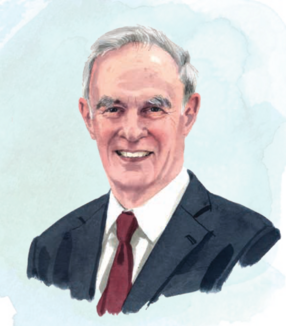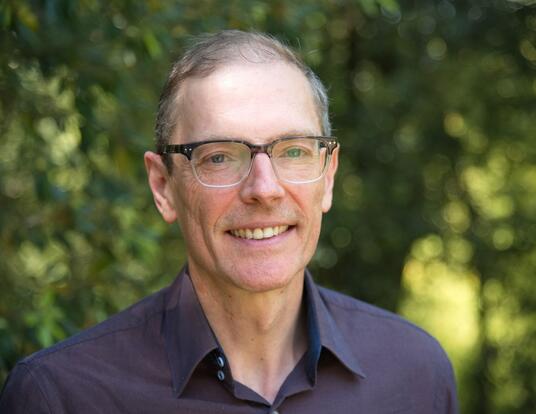Arthur Wheelock's love affair with art started in his grandparents’ basement, where his mother’s women’s group met to paint. In third grade, he joined them and found that the creative act fed his soul and fired his imagination. But he never really considered a career in art until he was a young student at Williams College.
Arthur Wheelock, PhD ’73
/
Illustration by Matt Cook
“My dad was the president of the family textile mill, the Stanley Woolen Company, in Uxbridge, Massachusetts,” Wheelock says. “I worked in the mill every summer and looked forward to it. But one Christmas when I was in college, my parents said ‘It’s wonderful that you like working in the mill, but you should not feel any obligation to it. You should follow your heart.’”
Follow his heart he did, majoring in painting and art history at Williams, attending Harvard Griffin GSAS, and studying old masters in the Netherlands, particularly their use of the camera obscura.
A 1973 fellowship brought him to the National Gallery of Art in Washington, DC, where his career would come to span more than four decades as curator of northern baroque and Dutch and Flemish painting, all while teaching art history at the University of Maryland.
There was a Rembrandt on offer and he described why he loved it in such a soulful, deep, moving way that I basically fell in love with Arthur right there.
—Thomas Kaplan, Businessman and Philanthropist
Among the many exhibitions Wheelock brought to the gallery, the most spectacular and influential was Johannes Vermeer, in 1995. It brought together 23 of the 35 works Vermeer was known to have painted.
“There had never before been a Vermeer retrospective,” says Earl Powell, who directed the gallery from 1992 to 2019. “It was an amazing achievement. It set Vermeer on a new trajectory and was a signal moment in the history of Dutch art.”
Wheelock is humble about such accolades, recalling instead events like the years he spent teaching about art at a boarding school in western Massachusetts. “I was so impressed by what these eighth graders could see with their untrained eyes,’ he says. “That experience became the basis for all the teaching I have done throughout my career.”
According to the businessman and philanthropist Thomas Kaplan, Wheelock has a special gift for imparting his vast knowledge of art and art history. “I met Arthur through a fellow collector at a dinner before a Sotheby’s auction in 2005 or 2006,” Kaplan says. “There was a Rembrandt on offer, and he described why he loved it in such a soulful, deep, moving way that I basically fell in love with Arthur right there.”
Wheelock worked with Kaplan and his wife, Daphne Recanati Kaplan, to create The Leiden Collection, one of the largest and most significant private collections of Dutch art in the world. “Arthur Wheelock is the gold standard in terms of scholarship regarding northern art,” says Kaplan. “He has changed the entire field of old masters. He is iconic within the space.”
“It’s true that I helped bring greater attention and understanding to a very important time in the world of art,” says Wheelock, “but what I feel most proud of in my career, as both a curator and a teacher, is that I helped transfer knowledge from one generation to another. I’ve been able to pass on the love of art, the emotional connection, and that has been very gratifying.”






